Effect of "quiet time" to reduce noise at the neonatal intensive care unit
Efecto del "horario del sueño" para la reducción del ruido en la unidad de cuidados intensivos neonatal
Efeito do "horário do soninho" para redução de ruído na unidade de terapia intensiva neonatal
Bruna Ribeiro dos Santos; Kelly Cristina Sbampato Calado Orsi; Maria Magda Ferreira Gomes Balieiro; Monica Hiromi Sato; Tereza Yoshiko Kakehashi; Eliana Moreira Pinheiro
Abstract
Objective: To identify and compare the Sound Pressure Levels (SPL) inside the incubators at an NICU with and without the quiet-time intervention.
Methods: Quantitative, descriptive research project conducted at the NICU of a university hospital. A Quest 400 noise dosimeter was used for data collection. The sample comprised 261 hours of registers.
Results: The results show that at the times pre-established for the interventions, the highest average equivalent noise pressure level (Leqaverage) were 58.5 dBA in room A and 53.1 dBA in room B. During other periods, a mean equivalent continuous noise level (Leqaverage) of 79.7 and 74.3 dBA was measured in both rooms, respectively.
Conclusion: During the intervention periods, the SPLs are in accordance with the levels recommended by regulatory agencies, which reinforces the efficacy of quiet time. However, results point to the need to improve the acoustic profile of the neonate's micro and macro environments, since these work as an interrelated system.
Keywords
Resumen
Palabras clave
Resumo
Objetivo: Identificar e comparar os Níveis de Pressão Sonora (NPS) no interior das incubadoras de UTIN com e sem a intervenção dos "horários do soninho".
Métodos: Pesquisa quantitativa, descritiva realizada em UTIN de um hospital universitário. Utilizou-se dosímetro Quest 400 para a coleta de dados. A amostra constituiu-se de 261 horas de registros.
Resultados: Os resultados indicam que nos horários determinados para a intervenção, os maiores níveis de pressão sonora equivalente médio (Leqmédio) foram 58,5 dBA na sala A e 53,1 dBA na B, fora desses períodos obteve-se um nível de ruído contínuo equivalente médio (Leqmédio) de 79,7 e 74,3 dBA, respectivamente.
Conclusão: Nos períodos de intervenção os NPS estão em consonância ao recomendado pelos órgãos regulamentadores o que reforça a efetividade do "horário do soninho", porém os resultados demonstram a necessidade de melhorar o perfil acústico do micro e macro ambiente do neonato, visto que funcionam como um sistema interrelacionado.
Palavras-chave
References
Costa R, Padilha MI. Saberes e práticas no cuidado ao recém-nascido em terapia intensiva em Florianópolis (década de 1980). Esc Anna Nery. 2012 abr/jun;16(2):247-54.
Cardoso MVLML, Chaves EMC, Bezerra MGA. Ruídos e barulhos na unidade neonatal. Rev. bras. enferm. 2010 jul/ago;63(4):561-6.
United States of America. Departament of Navy. Appendix C In: Draft environmental impact statement - US Navy f-35c west coast homebasing. Volume II. San Diego: Departament of Navy, 2013. Available on line: http://www.navyf35cwestcoasteis.com/Resources/Documents/58-13_F-35_West_Coast_FEIS_Delay.pdf
Kynio NM, Ravn IH, Lindemann R, Smeby NA, Torgersen AM, Gundersen T. Parents of preterm-born children; sources of stress and worry and experiences with an early intervention programme - a qualitative study. BMC Nursing 2013;12(1):28. Available on line: http://www.biomedcentral.com/1472-6955/12/28
Santos AO. NIDCAP: Uma filosofia de cuidados. Rev nascer e crescer. 2011;20(1):26-31.
Xie H, Kang J, Mills GH. Clinical review: The impact of noise on patients' sleep and the effectiveness of noise reduction strategies in intensive care units. Critical Care. 2009;13(2):208. Available online: http://ccforum.com/content/13/2/208.
Ministério da Saúde (BR). Secretaria de Atenção à Saúde. Departamento de Ações Programáticas Estratégicas. Atenção humanizada ao recém-nascido de baixo peso: método canguru. 2ª ed. Brasília (DF): Ministério da Saúde; 2011.
Peixoto PV, Araújo MAN, Kakehashi TY, Pinheiro EM. Sound level pressure in neonatal intensive care unit. Rev. Esc. Enferm. USP. 2011. 45(6):1309-14.
Peixoto PV, Balbino FS, Chimirri V, Pinheiro EM, Kakehashi TY. Internal noise levels in neonatal intensive care unit incubators. Acta paul. enferm. 2011; 24(3):359-64.
Nogueira MFH, Piero KCD, Ramos EG, Souza MN. Noise measurement in NICUs and incubators with newborns: a systematic literature review. Rev. Latino-Am. Enfermagem [online]. 2011; 19(1):212-21.
Wang D, Aubertin C, Barrowman N, Moreau K, Dunn S, Harrold J. Examining the effects of a targeted noise reduction program in a neonatal intensive care unit. Arch Dis Child Fetal Neonatal Ed. 2013;0:F1-F6.
Carbalho PR, Moreira ME, Sá RA, Lopes LM. SNAPPE-II application in newborns with very low birth weight: evaluation of adverse outcomes in severe placental dysfunction. J. Perinat Med. 2011;39(3):343-7.
Zamberlan NE, Ichisato SMT, Rodarte MDO, Fujinaga CI, Hass VJ, Scochi CGS. Ruído em uma unidade de cuidado intermediário neonatal de um hospital universitário. Cienc. cuid. saude. 2008 out/dez; 7(4):431-8.
Associação Brasileira de Normas Técnicas - ABNT. NBR IEC 60601-2-19: equipamento eletromédico - parte 2: prescrições particulares para segurança de incubadoras de recém-nascido (RN). Rio de Janeiro: ABNT; 1997.
Ranganna R, Bustani P. Reducing noise on the neonatal unit. Infant. 2011; 7(1):25-8.
Kuhn P, Zores C, Escande B, Astruc D, Dufour A. Moderate acoustic changes can disrupt the sleep of very preterm infants in their incubators. Acta Paediatr. 2013;102:949-52.
Byers JF, Waugh WR, Lowman LB. Sound level exposure of high-risk infant in different environmental conditions. Neonat Network. 2006; 25(1):25-32.
Philbin MK. Planning the acoustic environment of a neonatal intensive care unit. Clin Perinatol. 2007;31:331-52.
Submitted date:
10/11/2013
Accepted date:
08/14/2014



